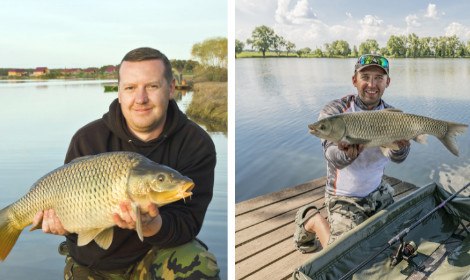
As the hotter days of the summer roll in, many anglers are excited about gettin back on the water in search of carp and other coarse species. Many newbie anglers will be making their way to commercial fisheries and local water to practice their craft and all the new tricks they’ve learned in between.
These newbie anglers will catch some carp and get confused about which type of carp it was. Some species of fish, such as the F1 carp and the Crucian Carp, and the Grass carp and the Common carp, confuse fishers about their identity as they can look so similar.
The only way to get over this problem is to learn the differences between these carp species and make sure to get them right the next time. So, ready to learn the differences between the Grass carp and the Common carp? Let’s dive in!
Differences In Anatomy
Let’s start off with something obvious here — the physical differences between a common carp and a grass carp. Once you have the rundown on those, you’ll be able to identify common and grass carp in a minute.
You’re lucky if you’ll learn to identify them in a few minutes because you’ll not have much longer than this before you’re going to have to release them back into the water!
Physical Features Of The Common Carp
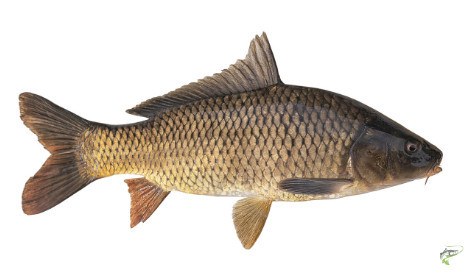
The common carp is a deep-bodied coarse fish with a short height and a long length. They are found in different colours such as grey, yellow and brown. Their bellies are usually paler than the rest of their bodies.
They also have a pair of barbels on each side of their mouth. These barbels are the most common identifying factors of the common carp.
They also have a down-turned mouth to suit their feeding habits at the bottom of the lakes and waters that they inhabit. While many species of coarse fish have a square tail, the common carp do not. Instead, it has a forked tail, which is another way in which anglers can identify that it’s a common carp.
Physical Features Of The Grass Carp

The grass carp is quite a large fish. It is oblong and stands out from other fish by its size. Its body is torpedo-like. It always appears in shades ranging from yellow to green. If you have trouble remembering the colours, just remind yourself that grass is yellowish-green, and so is the grass carp! However, some exceptions to this rule appear when some grass carp are silver in colour.
The grass carp do not have any barbels. Instead, it has an intermediate amount of scales on its body, with its head having no scales at all.
Its anal fin is quite close to the tail. Its mouth is small, rounded, and oblique, with fleshy lips that will aid you in identifying it.
So, what were the differences? Firstly, the colours. Common carp appears in various colours such as yellow, grey, green, silver, and brown, while the grass carp only appears in hues of silver, green and yellow. The common carp also has a pair of fleshy appendages of each side of its mouth called barbels. These barbels are absent in the grass carp.
The common carp has a down-turned mouth, whereas the mouth on the grass carp is a little more oblique. In addition, the common carp is deep-bodied, while the grass carp is more oblong. The common carp also has a longer dorsal fin as compared to the grass carp.
Differences In Feeding
This section is the one that will interest most anglers. Why is that? Because learning the feeding habits of different carp species is what helps anglers get better at their craft. If you can predict what kind of bait a particular type of fish will prefer at any time of the year, you’ll have better luck on the water than other anglers.
So, want to learn the feeding habits of the common carp and the grass carp? Then, let’s get into it.
Feeding Habits Of Common Carp
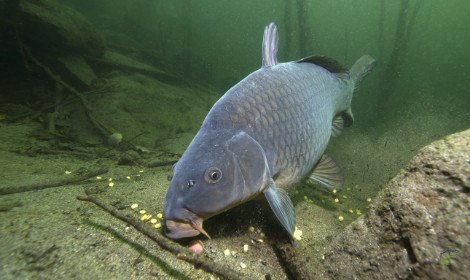
The common carp is an omnivorous species, which means that they feed on both animals and plants and their derivatives. However, anglers typically classify them as bottom-feeders because of their downturned mouth and habit of scavenging the bottom of soft, silty lake beds for food.
Their bottom feeder habits typically cause them to be a nuisance to the other fish and the environment. They kick up mud and silt while ferreting for food and make the water unsuitable for the other fish.
Common carp typically feed on benthic worms, small crustaceans, fish eggs, zooplankton, algae, aquatic vegetation, and even small fish species. It also eats various fish baits that anglers use, such as corn, bread, boilies, worms, etc.
Feeding Habits Of Grass Carp
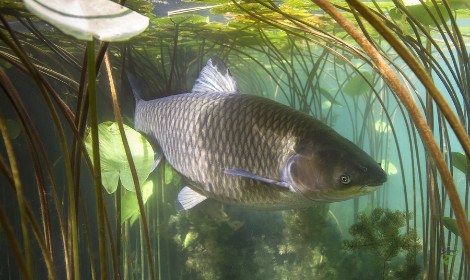
The young grass carp is capable of feeding off invertebrates and mollusks. However, as soon as they grow beyond three inches in length, they become almost completely herbivorous. As a result, they have a huge appetite. This huge appetite makes them excellent for controlling aquatic weeds and nuisance plants as grass carp can ingest up to 300% of their body weight in food in one day.
In fact, this voracious feeding has led to many fisheries and lakes using grass carp to get rid of unnecessary aquatic vegetation. Many fisheries introduce grass carp in their waters as long as they are of the triploid variety in the US. The triploid mutation renders the grass carp sterile and unable to reproduce.
So, what differences did we see? First, the common carp is omnivorous and feeds on a variety of different organisms to sustain itself. The grass carp, on the other hand, feeds primarily on aquatic vegetation.
Differences In Background
While both of these carp species belong to the same family, there are some key differences in their origin and distribution. Learning where these different species come from and their changes in this time is a great way to understand these fish and their habits.
So, what are you waiting for? Let’s have a quick rundown on it!
History Of The Common Carp
While it is unclear where humans first caught the common carp, research indicates that the Romans caught this fish first. The Romans farmed this fish for food purposes in south-central Europe, which archaeological remains have proven.
The domestication of the carp as a food source in Europe came about when the monks started using it as food around the thirteenth to the sixteenth century. The Americans imported carp to the US during the 1800s, with Asia and Europe having a carp population many centuries before.
Today, one can find the common carp in almost any part of the world. Most anglers worldwide use it as a sportfish, with some cultures also cooking it as a delicacy for Christmas dinners and the such.
History Of The Grass Carp
The grass carp traces its origins to regions of Russia and China. However, because of its reputation as a voracious herbivore, over seventy countries now import it to control their aquatic weed growth. The grass carp were imported into the US in 1963 to control the uncontrolled hydrilla growth.
All in all, the common and the grass carp have equally colourful histories that have led them to their status as coarse fish today.
How To Catch Common Carp And Grass Carp
So, are there a lot of differences in how you should go about catching them? Not really. This aspect is similar for a lot of carp species. Using general approaches such as using PVA bags, method feeder fishing, and other common bait works great in both cases, but what are some tips that will give you an extra edge when trying to catch these fish? Let’s find out.
How To Catch Common Carp
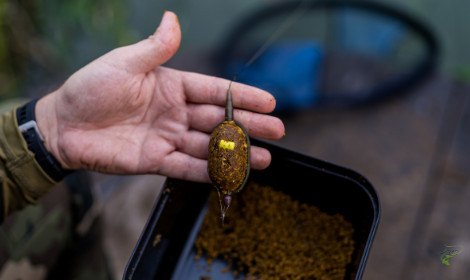
Since common carp are bottom feeders, anglers should make sure that they use rigs that present the bait at the bottom. This presentation makes it easier to find actively feeding carp. So, which presentations are these? Two that are popular, of course, are the hair rig and the chod rig.
The hair rig’s hook presents the bait so that limits the chances of the carp spitting it out once they’ve sucked it in along with the bait. By virtue of its lead, the chod rig presents the bait perfectly over weedy bottom of the water so your bait doesn’t get hidden or buried in underwater weeds or debris.
Some additional tips are:
- Don’t use shiny hooks or opaque lines. Make sure your hooks are dull, and you use a microfilament line.
- Fish undercover. That’s where most of the carp aggregate.
- Look out for signs of carp movement and fish accordingly.
- When using method feeders or PVA bags, recast with a freshly packer feeder or bag after every fifteen to twenty minutes.
Well, that’s all on how you should fish for common carp.
How To Catch Grass Carp

Since grass carp are primarily herbivores, you should use suitable bait. Grass carp have been know to take conventional carp bait used for other species but corn or bread on the surface seems to work well.
You can also pre-bait an area with some canned sweetcorn. This trick will help the grass carp become less wary of that spot. So, the next time you come fishing, they’re not spooked too easily.
Some additional tips are:
- Grass carp will abandon any bait where the line is too taut. Make sure to give your line a free spool to avoid this situation from occurring.
- Wear neutral colours so that you don’t stand out too much. Grass carp have exceptionally good eyesight and can get easily spooked by movement outside the water.
- When it starts thrashing around after getting caught, allow some extra line to the fish to control the situation before it gets unhooked.
- If the water is clear, go for surface fishing or carp stalking.
- Well, that’s all on fishing for grass carp.
That’s All
The common and grass carp are two of the most common coarse fish among UK anglers. However, to become the best at catching them, one needs to first learn all about them.
We hope this Grass Carp vs. Common Carp guide served to highlight the key differences in appearance, feeding, and background of the two, as well as which techniques you can use to catch either of them.

